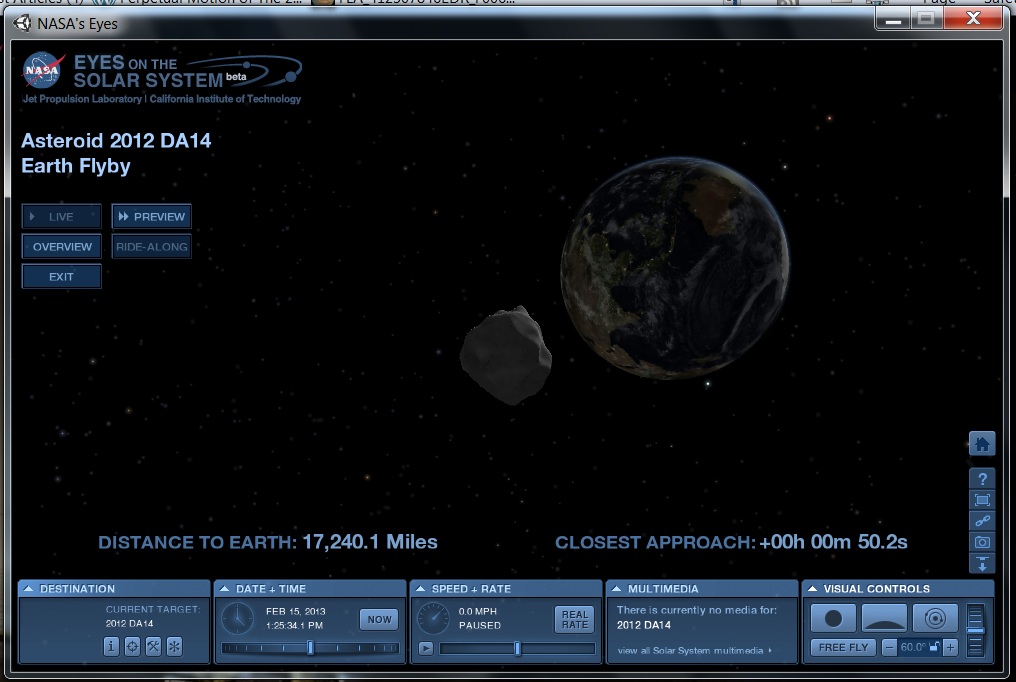Bill Nye the Science Guy gave the figure of 15 minutes for the amount of time by which the earth will miss a collision with asteroid DA14 at closest approach a few hours from now. What does this mean? I believe the idea is that the orbits of the earth and the asteroid intersect, and that the difference in the time of a passage through the point of intersection is 15 minutes. We can derive the 15 minute figure by taking 2pi times 93 million miles and dividing by 4 * 24 * 365.25, which gives the distance the earth moves along its orbit in 15 minutes, in the traditional approximation, that is. This comes to 16664.848 miles, near enough to the 17240 miles of the official close approach distance to justify the logic of this assumption. But is the premise of this idea correct?
Not really! Here is a screen shot from a downloaded version of JPL’s Eyes on the Solar System, the basis for a video that’s also available on the internet: 
If you download the player, as I did, and feel your way through the controls and options, you will see that you get a lot of extras over the video. Notably, the player renders the night side of earth, which is not in the video for some reason. Note in the screen shot that Mars, Mercury and Uranus are all visible ( at about 2 o’clock of the earth’s disk for Mars and Mercury, and 5:30 for Uranus. )
The point is that DA14 is just opposite the sun at closest approach, so it appears that the timing was near perfect for a collision, but the orbits do not in fact intersect, with DA14 passing “spaceside” in the plane of the ecliptic.
You can see that the principal motion of DA14 relative to the earth is from below the plane of the ecliptic to above it, and nearly perpendicular. In fact, the earth is overtaking and passing DA14 along the line of its orbit, as can be seen in the NEO Orbit applet for DA14, even though the approach is too close to be seen in detail on the available scale.
The period of DA14 is 314 days, but its semimajor axis is .91 AU, or 91% that of earth’s orbit. Since it is near the peak of its arc, so to speak, it is analogous to a suborbital missile at its apogee being overtaken by an orbiting satellite at the same altitude.
Well, we avoided a collision, but we still got hit by an astronomy lesson.
